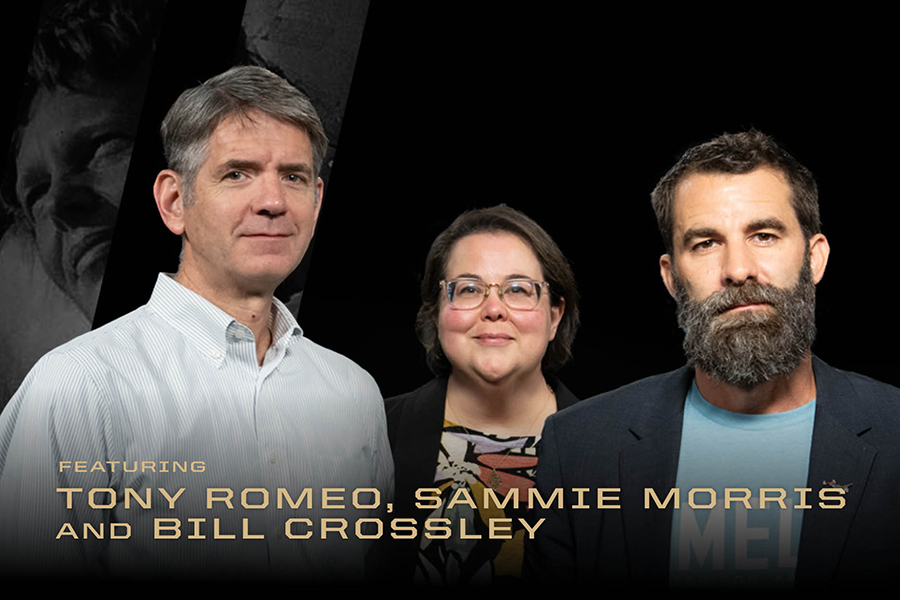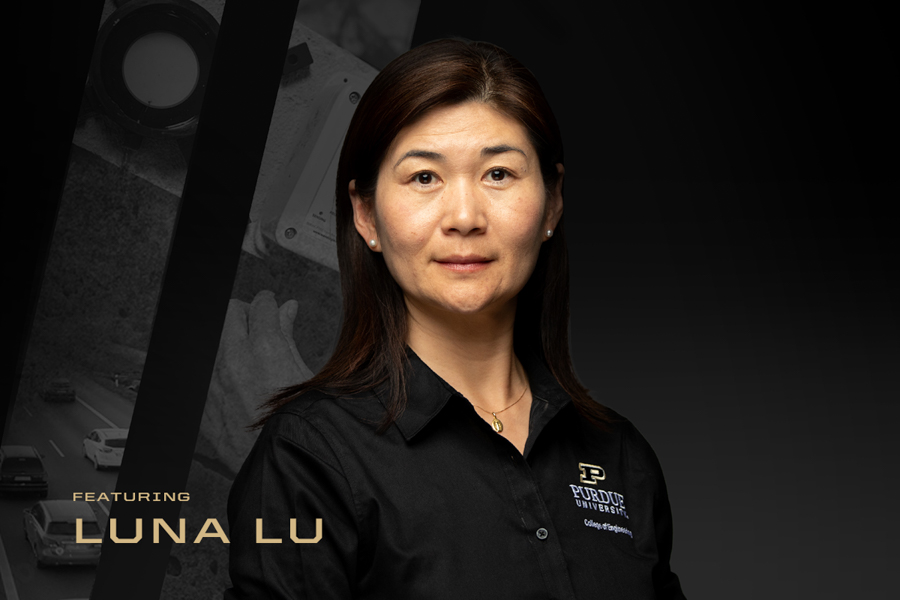
Reaching for the Sky, Deep Beneath the Sea - Amelia Earhart
Few mysteries have captured the American imagination like the disappearance of Amelia Earhart over the Pacific Ocean on July 2, 1937, while attempting to become the first woman pilot to circumnavigate the world. Earhart spent several years at Purdue, which invited her to come to campus and inspire our women students in STEM careers. Earhart stayed in the women’s residence hall for a few weeks each semester giving lectures, counseling women on careers, and advising the aeronautical engineering department on its nascent program in aeronautics. She prepped for the flight at Purdue’s airport, and flew in the skies above campus grounds. Tony Romeo, CEO of underwater exploration company Deep Sea Vision, believes it has found her plane in the Pacific on the ocean floor. Tony and two Purdue professors, Sammie Morris and Bill Crossley, discuss Amelia’s time at Purdue the flight and what might have gone wrong, the recovery mission, and what this adventurous, pioneering woman meant to America.

Pharmaceuticals: From Discovery to Delivery - Elizabeth Topp and Alina Alexeenko
There’s a lot more to the wonder drugs that provide life-changing treatments than the research breakthroughs that enable them. Just because you make something work in a lab doesn’t mean you can produce it at scale, especially given the fact that pharmaceuticals are inherently unstable. After discovery of the novel substance (molecule) comes follow-on steps like manufacturing (at acceptable yields), packaging, quality assurance, storage/preservation, logistics/transportation, and regulatory approval — all obstacles to overcome so the new therapeutic’s benefits can be realized across society, including remote, underserved populations. Elizabeth Topp and Alina Alexeenko discuss the ins and outs of advanced pharmaceutical and biotechnology manufacturing — including in space — and the nexus of Purdue and Indiana as a powerhouse in this strategic economic and social impact sector.

Spintronics Pioneer - Supriyo Datta
The introduction of quantum elements into classical computing is revolutionizing semiconductor technology, as researchers push the boundaries of knowledge at the convergence of physics, chemistry, and electrical engineering. Quantum transport of electrons might sound like something from Star Trek, but the flow and spin of electrons at an atomic scale is what makes possible modern semiconductor technology advances, like the billion-plus transistors in the smartphone. Supriyo Datta was recently elected to the prestigious National Academy of Sciences, and has been called "one of the most original thinkers in the field of nanoscale electronics." Here he explains his ideas about quantum physics in an engineering context and the role of quantum and electron spin — "spintronics" — in delivering the compute horsepower for today's advances in AI, Internet of Things, edge computing, autonomy, and optimization.

Student-Driven Innovation Ignites Campus - Haddy Alchaer and Zoe Slatkin
At Purdue, classroom, lab and seminar learning is the springboard for a student's deep dive into their passions. Purdue students are not only excelling in foundational tenets taught in that traditional academic setting — they are spilling out after class to join or start clubs and organizations, collaborating across disciplines with other students and faculty, entering national and international competitions, and hosting national expos in their fields. They are developing professionally by learning hands-on at industry level via internships and experiential co-ops, and launching research and startups to take their pursuits to a whole new level. This episode of Engenuity features two students who are taking part in the intellectual and innovation ferment — in their case, in space and robotics — that is bubbling across the Purdue campus.

Building a Semiconductor Ecosystem - Mark Lundstrom
Semiconductors and chips are at the heart of everything we do. They are some of the most fiendishly complex engineered devices ever built, and are getting even more complex as we race to develop chips with mind-boggling power to fuel artificial intelligence. Chips are also a national security priority, which is why the CHIPS Act aims to onshore, or near shore, semiconductor manufacturing. This is all in Purdue's wheelhouse, as America's "Semiconductor University." Mark Lundstrom, Purdue's chief semiconductor officer, draws upon his 50 years in the field to discuss technologies like advanced packaging that are driving sector innovation forward; the challenges to building out an enduring semiconductor ecosystem in the United States; and how Purdue is tackling the No. 1 industry challenge — workforce development — by leading an urgent, ambitious effort to educate engineers and skilled technicians for the most sophisticated and foundational technology we humans manufacture.

Breathing New Life into U.S. Infrastructure - Luna Lu
It's widely agreed by all that United States infrastructure is in dire need of improvement, getting low grades like C- and D- in various studies. Luna Lu wants to make our aging infrastructure "smarter." She’s leveraging the Internet of Things via her smart, materials-based sensor technology and novel, interpretive data-processing methods, enabling infrastructure to monitor and wirelessly communicate its condition with current and actionable information so we can detect problems earlier and mitigate them. This can vastly improve infrastructure maintenance and modernization, so our roads and bridges can keep commerce and people moving safely and efficiently and the American economy humming. And Lu isn’t done with her innovation journey – her sensor-based testing technology is gaining wider use across other sectors, and next on her agenda is investigating the manufacture of plant-based cement to provide not only carbon neutrality but a carbon-negative construction material that can absorb CO2 in permanent storage.